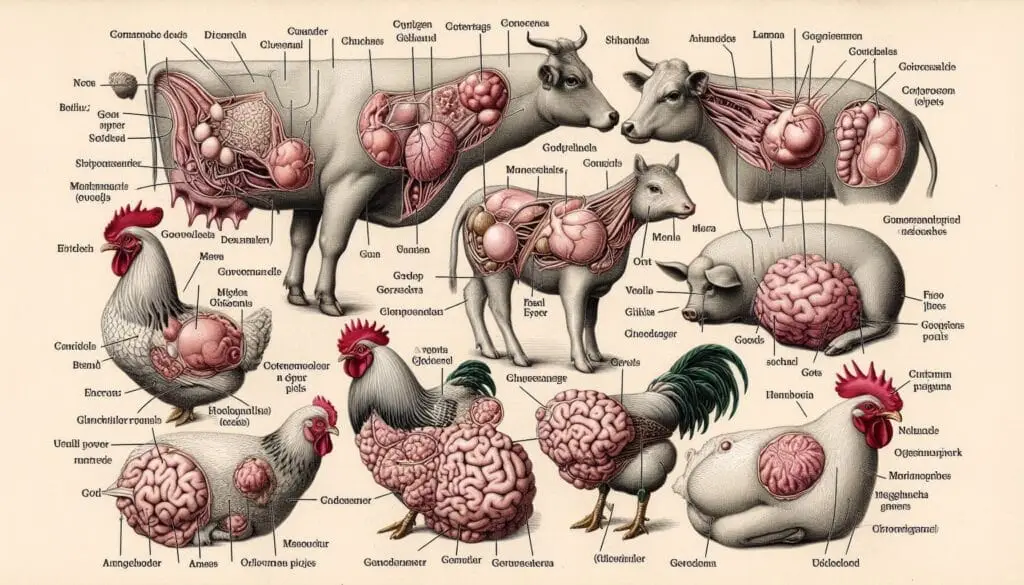Behavioral Adaptations in Veterinary Animals

What Are Behavioral Adaptations?
Behavioral adaptations are actions or responses that animals exhibit to enhance their survival chances within specific environments. These behaviors can be instinctual or learned and can vary widely among species. For instance, some animals migrate seasonally to find food or better living conditions, while others may alter their daily activity patterns based on environmental cues.
Types of Behavioral Adaptations
Migration
Migration is a well-known behavioral adaptation that many species employ to cope with seasonal changes. Birds are prime examples, often traveling thousands of miles to find warmer climates during winter. This adaptation allows them to access food resources that would otherwise be unavailable due to harsh weather conditions (National Geographic).
Hibernation
Hibernation is another crucial adaptation observed in various species. Animals like bears enter a state of deep sleep during winter months when food is scarce. They significantly reduce their metabolic rate to conserve energy until conditions improve. This adaptation is vital for survival during periods of extreme cold (Smithsonian).
Social Behavior Changes
Social behaviors can also adapt based on environmental factors. For example, domestic dogs may become more socialized when living in a household compared to their wild counterparts. They learn to interact with humans and other pets, which can help reduce fearfulness and aggression (American Kennel Club).
Learned Behaviors
Many animals exhibit learned behaviors that help them adapt to their environments. For instance, dogs can learn commands through positive reinforcement training methods. This adaptability is crucial for integrating them into human households effectively (ASPCA).
Importance of Behavioral Adaptations in Veterinary Medicine
Understanding behavioral adaptations is vital for veterinarians and animal caretakers. These adaptations can provide insights into an animal’s health status and overall well-being.
Behavioral Indicators of Health Issues
Animals often display behavioral changes when they are unwell or stressed. For example:
- Lethargy: A normally active dog may become lethargic if it is experiencing pain or illness.
- Aggression: Sudden aggression can indicate discomfort or fear.
- Isolation: Cats that isolate themselves may be signaling stress or health issues.
Recognizing these signs early allows veterinarians to intervene promptly, ensuring better outcomes for the animals (Veterinary Partner).
Enhancing Animal Welfare through Understanding Behavior
Veterinary professionals can enhance animal welfare by understanding behavioral adaptations. By creating environments that cater to these behaviors, veterinarians can help reduce stress and anxiety in animals during treatments or hospital stays.
For instance, providing hiding spaces for cats can make them feel safer in a veterinary clinic setting (PetMD). Similarly, allowing dogs to engage in natural behaviors like sniffing or exploring during visits can alleviate stress.
Training Techniques Utilizing Behavioral Adaptations
Veterinarians often employ various training techniques that leverage behavioral adaptations to improve animal behavior and compliance during examinations or treatments.
Positive Reinforcement
Positive reinforcement involves rewarding desired behaviors to encourage their repetition. This method is particularly effective with dogs and other domesticated animals. For example, rewarding a dog with treats for sitting calmly during a vet visit promotes good behavior (Karen Pryor Clicker Training).
Desensitization
Desensitization techniques gradually expose animals to stimuli that may cause fear or anxiety, helping them adapt over time. This approach is commonly used for pets fearful of veterinary visits or handling procedures (Fear Free Pets).
Clicker Training
Clicker training is another popular method that uses a sound (the click) as a marker for desired behavior followed by a reward. This technique helps reinforce specific actions and is effective for both dogs and cats (The Spruce Pets).
Case Studies: Behavioral Adaptations in Veterinary Practice
Case Study 1: Migratory Birds
Migratory birds often face challenges when adapting to human-altered environments. A study highlighted how urbanization impacts their migratory patterns, leading to changes in feeding habits and nesting behaviors (Nature). Understanding these adaptations helps veterinarians provide better care for birds affected by habitat loss.
Case Study 2: Domestic Dogs
Research has shown that domestic dogs exhibit significant behavioral changes based on their living conditions (StudySmarter). For instance, dogs raised in social environments tend to be more adaptable and less fearful than those raised in isolation. This knowledge aids veterinarians in advising owners on proper socialization techniques.
The Role of Environmental Enrichment
Environmental enrichment involves enhancing an animal’s living space to promote natural behaviors and reduce stress. This practice is especially important for animals housed in captivity or clinical settings.
Types of Environmental Enrichment
- Physical Enrichment: Providing toys, climbing structures, or hiding spots encourages exploration and play.
- Social Enrichment: Facilitating interactions with other animals or humans helps satisfy social needs.
- Sensory Enrichment: Introducing novel scents or sounds stimulates the animal’s senses and encourages natural behaviors (Animal Welfare Institute).
Implementing these enrichment strategies can lead to improved mental health and overall well-being for veterinary patients.
Conclusion
Behavioral adaptations are essential for understanding how animals interact with their environments and cope with various challenges. In veterinary medicine, recognizing these adaptations allows professionals to provide better care and enhance the welfare of the animals they treat. By applying knowledge of behavioral changes, veterinarians can improve training methods and create supportive environments that cater to the needs of both domestic pets and wildlife.
More from Veterinary Physiology:
https://wiseias.com/environmental-physiological-stimuli-animals/
https://wiseias.com/cell-surface-receptors/
https://wiseias.com/nuclear-receptors-in-animals/






Responses